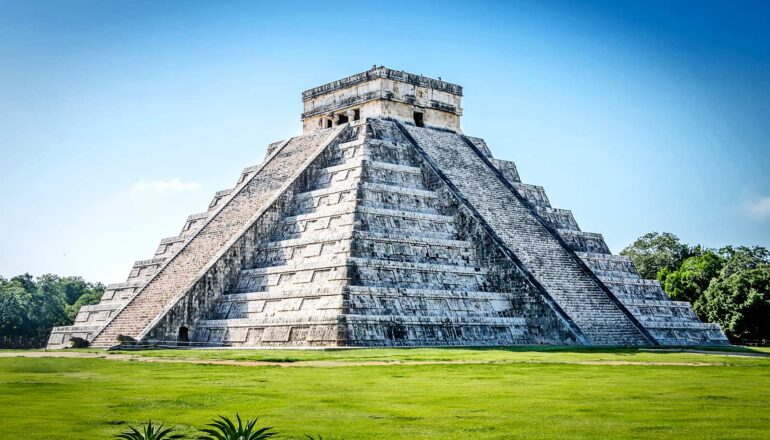Ancient Maya population was bigger than scientists thought
- The ancient Maya civilization was significantly more populous than previously thought, with estimates suggesting between 9.5 million to 16 million people inhabited the region during the Late Classic period (600–900 CE).
- New research using lidar technology reveals a far more complex and integrated society, with consistent patterns of urban and rural organization across an immense region.
- The study confirms that the Classic Maya Lowlands were densely populated and highly structured, with elite management of food production and distribution across both cities and rural areas.
- The findings shift understanding of the Classic Maya from fragmented city-states to a deeply interconnected civilization, supported by a carefully structured system of governance, agriculture, and commerce.
- The research highlights the power of airborne lidar as a tool for archaeological discovery in dense tropical environments, providing new insights into how Maya society functioned at the regional scale and raising questions about its vulnerabilities to environmental stress and political collapse.

New research reveals that the ancient Maya civilization was far more populous than previously thought.
The findings show the civilization supported as many as 16 million people across parts of modern-day Guatemala, southern Mexico and western Belize.
“The ancient Maya never fail to amaze me.”
The research in the Journal of Archaeological Science: Reports reveals one of the most comprehensive regional-scale analysis to date of Maya settlement patterns using lidar (light detection and ranging) technology.
The findings significantly revise population estimates and models of ancient Maya settlement in the Central Maya Lowlands, revealing a far more complex, integrated, and populous civilization than previously understood.
“The ancient Maya never fail to amaze me,” says lead author Francisco Estrada-Belli, a research professor in Tulane University’s Middle American Research Institute and manager of its GIS (Geographic Information System) lab.
“We expected a modest increase in population estimates from our 2018 lidar analysis, but seeing a 45% jump was truly surprising. This new data confirms just how densely populated and socially organized the Maya Lowlands were at their peak.”
Using advanced analytical methods and reprocessed lidar data, researchers estimate that between 9.5 million and 16 million people inhabited the region during the Late Classic period (600–900 CE), across a 95,000-square-kilometer (around 36,680 square miles) area encompassing the rainforest lowlands.
These new estimates confirm that the Classic Maya Lowlands were not only densely inhabited but also highly structured, with consistent patterns of urban and rural organization across an immense region, Estrada-Belli says.
“We’re confident these lidar-based findings give us the clearest picture yet of ancient Maya settlement patterns,” Estrada-Belli says.
“We now have hard evidence that Maya society was highly structured across both cities and rural areas and far more advanced in resource and social organization than previously understood.”
The team combined data from multiple publicly available and private lidar surveys, including reanalyzed environmental lidar collected by NASA’s Goddard Space Flight Center, with newer archaeological mapping efforts in southern Campeche and Quintana Roo, Mexico.
The researchers identified a single, consistent model of urban and rural organization, with residential and agricultural features clustered around elite-controlled plaza groups. Extensive agricultural infrastructure, especially in the densely populated north, points to elite management of food production and distribution across both cities and rural areas.
Nearly all structures were located within five kilometers (3.1 miles) of a large or medium-sized plaza group, indicating widespread access to civic-ceremonial centers and challenging past assumptions about isolated rural settlements.
This study shifts understanding of the Classic Maya from fragmented city-states and scattered hamlets to a deeply interconnected civilization, supported by a carefully structured system of governance, agriculture and commerce.
The findings also highlight the power of airborne lidar as a tool for archaeological discovery in dense tropical environments, where traditional field surveys are often hindered by dense vegetation and inaccessibility.
“We are very grateful to the Hitz Foundation for funding the MARI-GIS lab and making this research possible,” says Marcello Canuto, a study coauthor and director of the Middle American Research Institute.
By integrating data across both urban and rural contexts, the research provides new insight into how Maya society functioned at the regional scale and raises new questions about the vulnerabilities of such a large, interconnected population to environmental stress and political collapse.
“We’re thrilled to have developed a blueprint for using lidar data from multiple sources, including freely available ones,” Canuto says.
“This approach can help archaeologists around the world make new discoveries without waiting for new lidar flights. It’s a big step forward for the field.”
Source: Tulane University
The post Ancient Maya population was bigger than scientists thought appeared first on Futurity.
